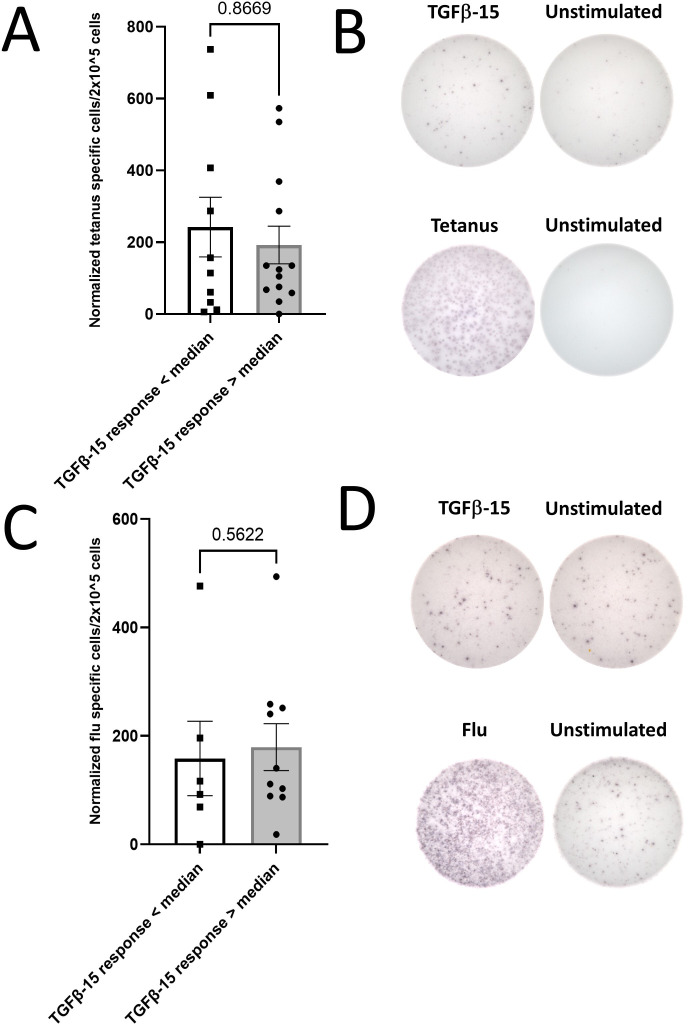Figure 4.
The amplitude of TGF-β-15 specific responses is not coupled to the amplitude of responses to tetanus peptide. (A) Peripheral blood mononuclear cell were tested for response to the tetanus epitope ‘tetanus-long’ using in vitro interferon-ɣ enzyme-linked immunospot assays. The amplitude of the normalized tetanus-long specific response was compared between patients with a response above or below the median TGF-β-15 specific immune response. Responses against tetanus-long were not analyzed in baseline samples in five patients from the group with a response above the median and in one patient from the group with a response below the median, but in samples acquired within 2 weeks of baseline. (B) Representative pictures of a patient with an absent TGF-β-specific immune response (top) but an intact tetanus specific immune response (bottom). (C) Same analysis as in A with a short influenza virus derived epitope ‘C18 A2 Flu’ instead of tetanus derived epitope. (D) Representative pictures of a patient with an absent TGF-β-specific immune response (top) but an intact influenza virus specific immune response (bottom). Error bars depict SEM. Statistics made using Mann-Whitney test. TGF-β, transforming growth factor-β.

